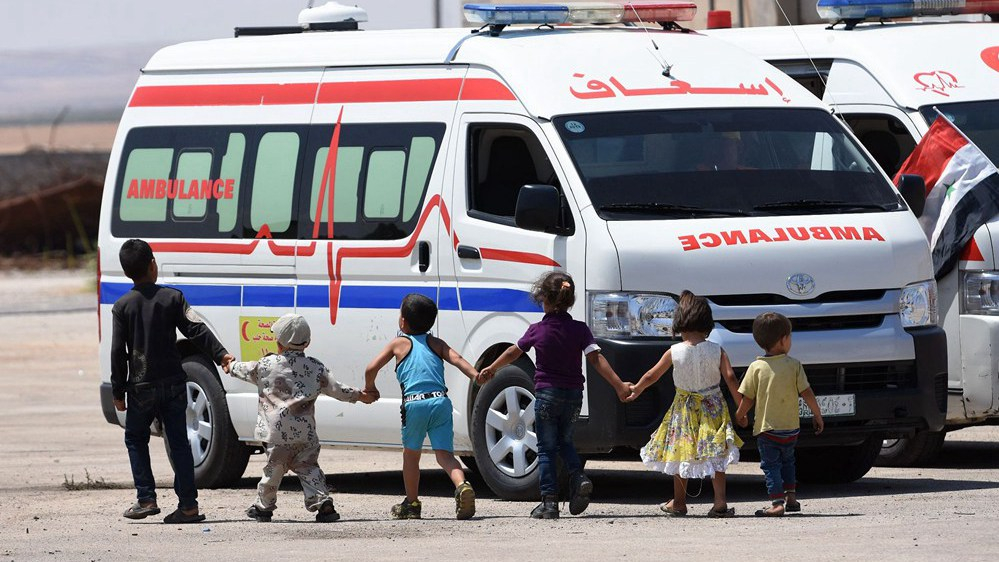The latest figures from United Nations agencies and non-governmental organizations paint a harrowing picture of death, abuse and extreme poverty for potentially hundreds of millions of children around the world.
As heated discussions on hot button issues such as the wars in the Middle East and Africa are now underway at the UN General Assembly, we look at some of the difficult facts regarding the most vulnerable demography -- the real human cost behind the news headlines.
A total of 6.3 million children died before their 15th birthday in 2017, or one every five seconds, according to a recent report released by UNICEF, the World Health Organization (WHO), the United Nations Population Division and the World Bank.
Most of these deaths were preventable, the report said, with data pointing to continued regional and income disparities in one's chances of survival.
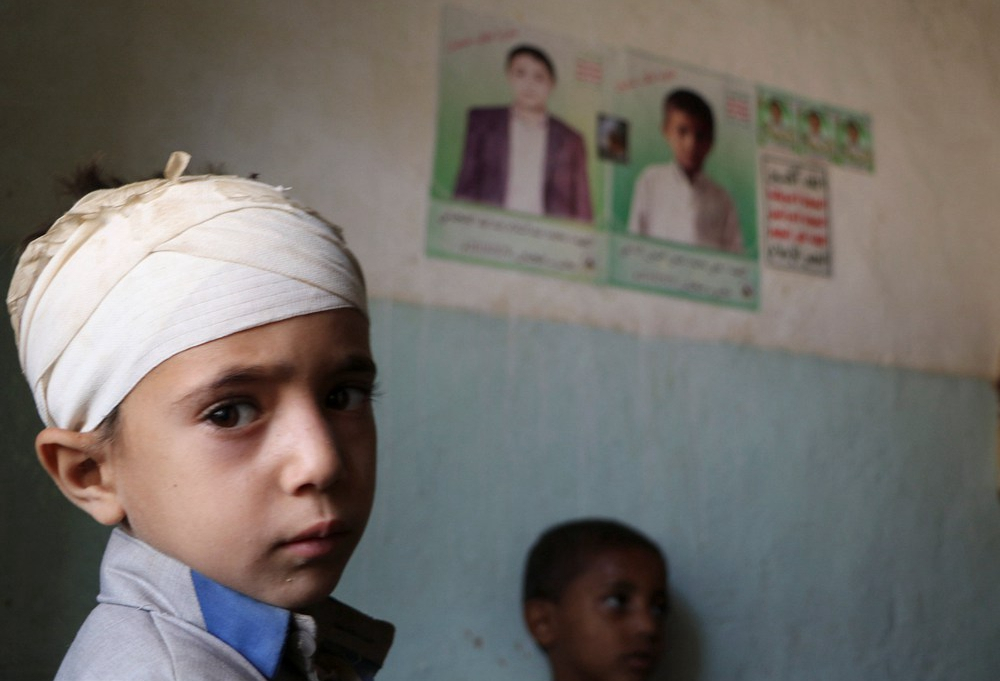
Mukhtar Hadi, who survived a Saudi-led air strike that killed dozens including children, stands next to portraits of victims in Saada, Yemen, September 4, 2018. /VCG Photo
Mukhtar Hadi, who survived a Saudi-led air strike that killed dozens including children, stands next to portraits of victims in Saada, Yemen, September 4, 2018. /VCG Photo
'War on children'
More than 10,000 children were killed or maimed in armed conflicts worldwide last year, while others were sexually abused and forced to serve as child soldiers, according to the UN's annual "Children and Armed Conflict" report.
Armed conflict kills and maims more children than soldiers, as a pattern of civilians being primarily targeted has emerged in modern warfare, the report said.
The UN verified more than 21,000 grave violations of children's rights in 2017, compared with 15,500 the previous year.
Virginia Gamba, the UN's expert on Children and Armed Conflict, said crises in the Central African Republic (CAR), the Democratic Republic of the Congo (DRC), Myanmar, South Sudan, Syria and Yemen were the main reason for the increase.
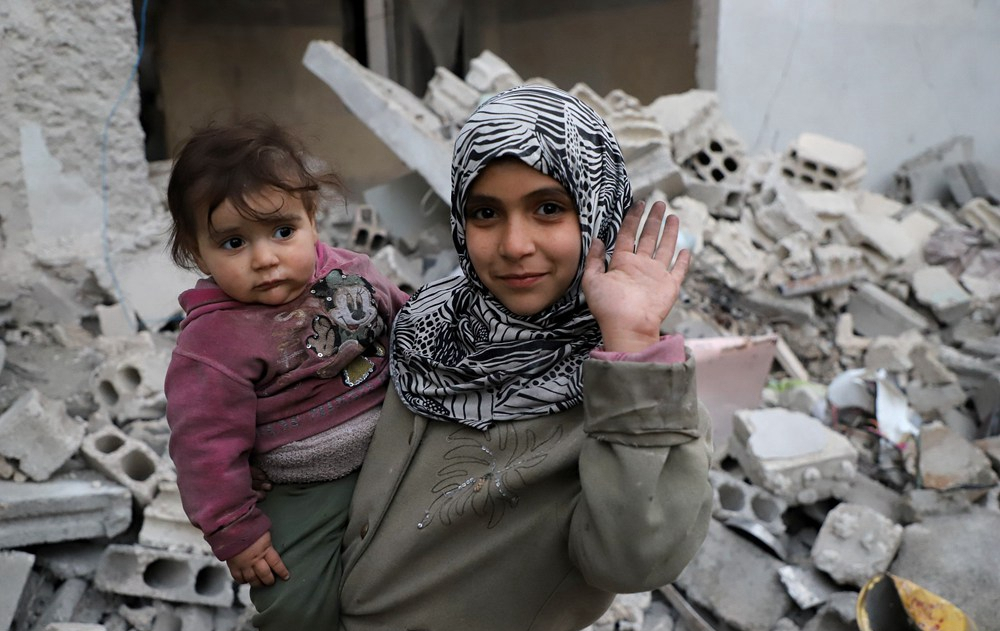
A Syrian girl holds a baby in her arms as she poses for a photo for the awareness-raising campaign "#Iamstillalive" on social media, March 2, 2018. /VCG Photo
A Syrian girl holds a baby in her arms as she poses for a photo for the awareness-raising campaign "#Iamstillalive" on social media, March 2, 2018. /VCG Photo
A report by charity Save the Children, titled "The War On Children," finds that an increase in grave violations against children is mainly due to compliance and a general absence of monitoring and reporting.
In August alone, a total of 66 children were reportedly killed in Syria, according to a Syrian NGO.
In the same month, dozens of children were killed by a Saudi-led coalition air strike on a bus in northern Yemen in the latest and one of the deadliest attacks on civilians in the country's three-year-long war, while the UN investigates the recruitment of child soldiers, among other possible war crimes in Yemen's civil war.
More than five million Yemeni children in the impoverished country suffer a double whammy of war and famine as food and fuel prices soar, Save the Children stated.
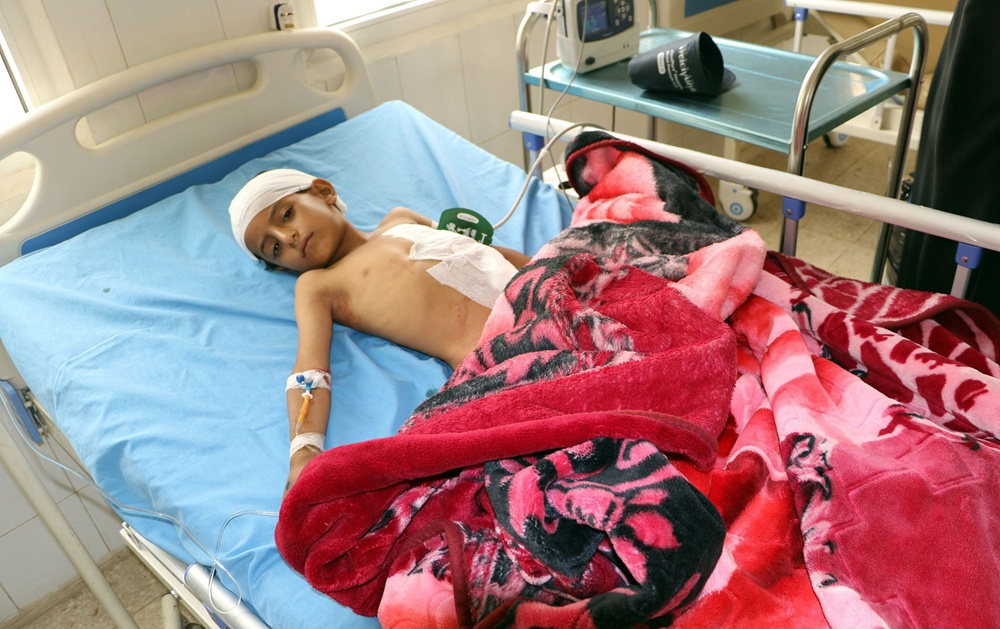
A Yemeni boy wounded in an air strike by coalition forces lies on his hospital bed in Saada, Yemen, August 10, 2018. /VCG Photo
A Yemeni boy wounded in an air strike by coalition forces lies on his hospital bed in Saada, Yemen, August 10, 2018. /VCG Photo
Half of the world's poor are children
A study co-led by the UN Development Programme (UNDP) shows children make up half of the world's poor people.
Some 1.3 billion people live in multidimensional poverty, a new measurement used by the UN to assess poverty, 661 million of whom are children in low and middle-income countries.
This means one in every three children suffers from multiple hardships, lacking basic healthcare, sanitation, adequate nutrition or primary education.
The situations in Yemen and Syria are believed to be worse than they seem due to the exclusion of displaced population in national statistics, the study said.
UNICEF estimates that nearly 28 million minors are currently "forcibly displaced." Ten million of them are refugees who are extremely vulnerable to being preyed upon by traffickers and risk further abuse and enslavement.
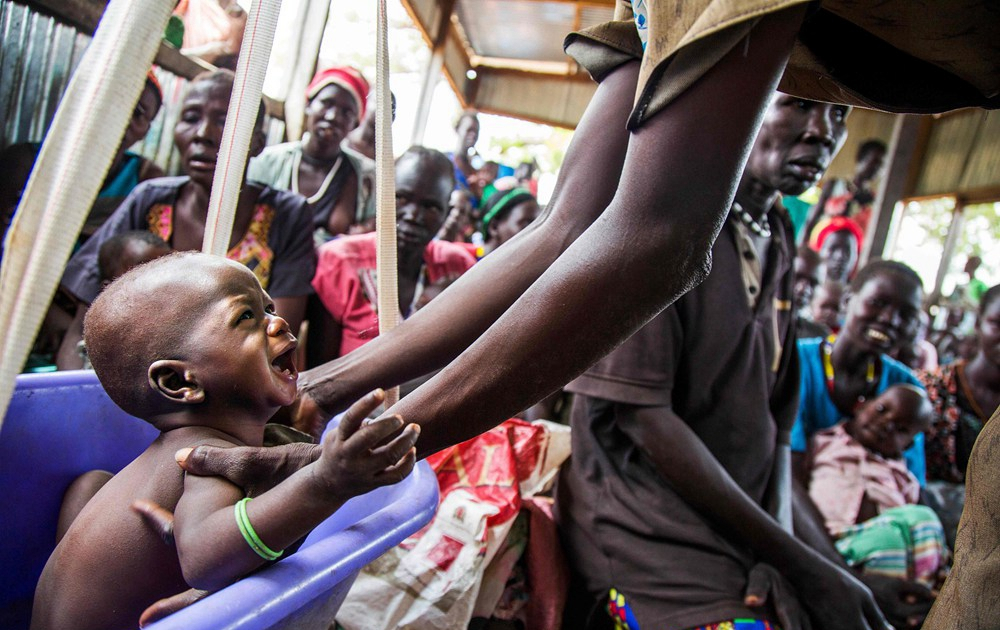
A mother weighs her malnourished child in a nutrition center in South Sudan, May 31, 2017. /VCG Photo
A mother weighs her malnourished child in a nutrition center in South Sudan, May 31, 2017. /VCG Photo
Among the 6.3 million child deaths in 2017, a vast majority of 5.4 million occurred in the first five years of life, half of which were in sub-Saharan Africa, according to the UN Inter-agency Group for Child Mortality Estimation (UN IGME).
An average child in sub-Saharan Africa is 14 times more likely to die before five than those in high-income countries, and by 2050, an estimated 60 percent of under-five deaths will take place in sub-Saharan Africa, according to UN IGME, reflecting a sad reality for many people of being left behind simply because of where they are born.
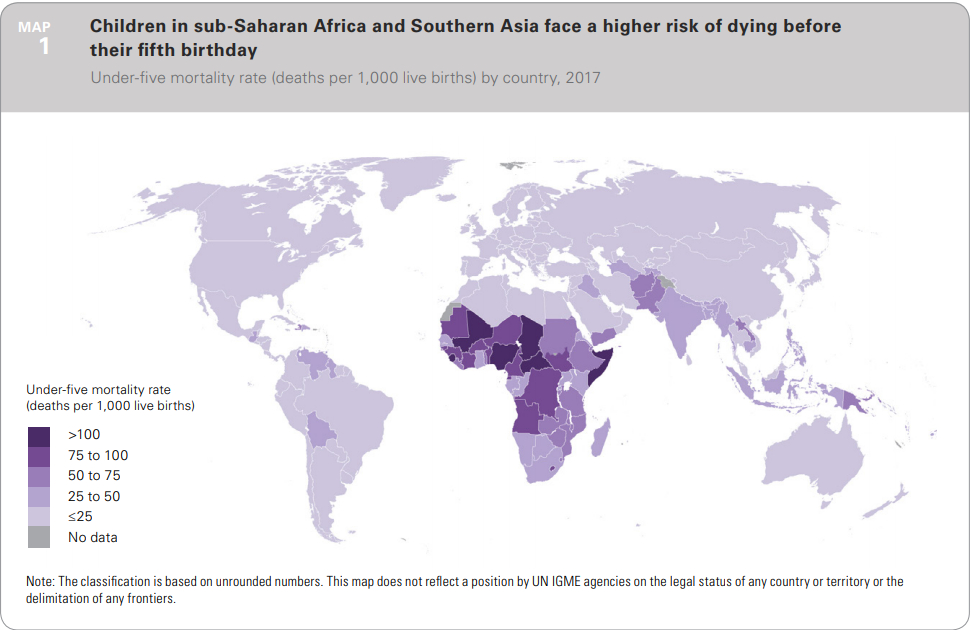
A map shows varying mortality rates around the world in 2017; the deeper the color the more deaths per 1,000 births. /Photo via UNICEF
A map shows varying mortality rates around the world in 2017; the deeper the color the more deaths per 1,000 births. /Photo via UNICEF
What about the survivors?
Those who survive natural and man-made disasters still face a future of uncertainty and lost opportunities.
One in three children and young people between 5 and 17 years old living in countries affected by conflict or disaster are out of school, according to UNICEF.
"When a country is hit by conflict or disaster, its children and young people are victimized twice," UNICEF Executive Director Henrietta Fore said.
"In the near term, their schools are damaged, destroyed, occupied by military forces or even deliberately attacked, and they join the millions of young people out of school, and as the years progress they seldom return. In the long term they -- and the countries they live in -- will continue to face perpetuating cycles of poverty."
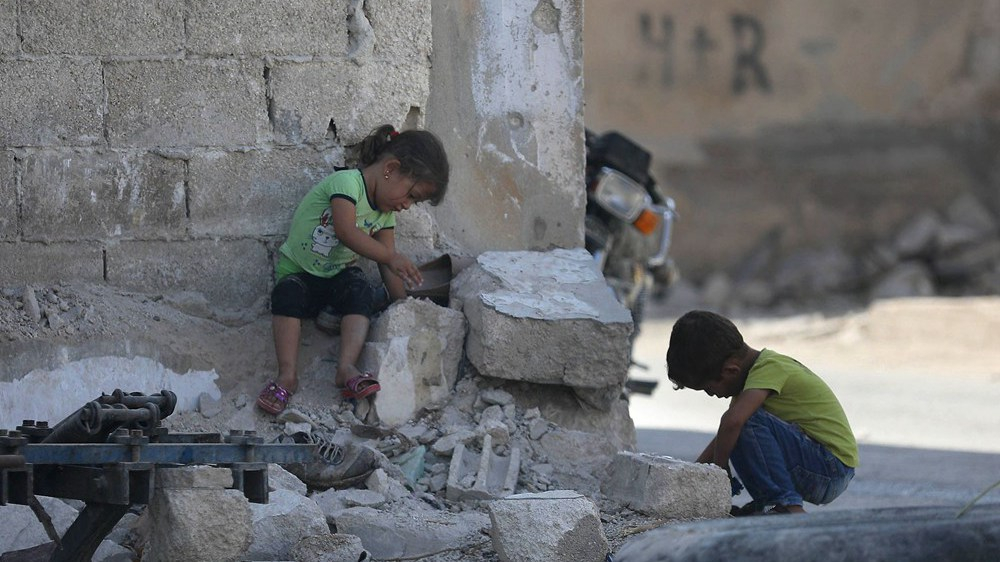
Syrian children play in the northern countryside of Hama province, Syria, September 18, 2018. /VCG Photo
Syrian children play in the northern countryside of Hama province, Syria, September 18, 2018. /VCG Photo
Fighting for future
Despite all these grim findings, published just ahead of the 73rd session of the United Nations General Assembly, the UN report on child mortality found that fewer children are dying each year worldwide.
Save the Children also reported signs of improved conditions for children in Africa and the Middle East, though there are some countries still lagging far behind.
The reports have given shape to a widespread humanitarian crisis, and more broadly, a critical missing piece in an inclusive and sustainable world for generations to come.
(Cover: Syrian children hold hands near a parked ambulance at a temporary aid center in Aleppo, Syria, July 20, 2018.)

